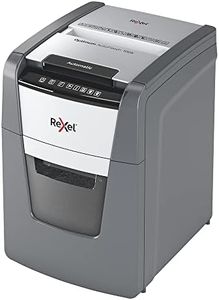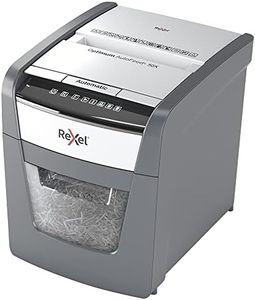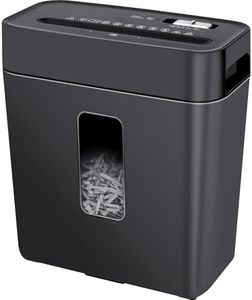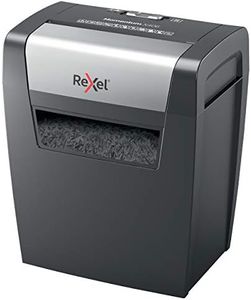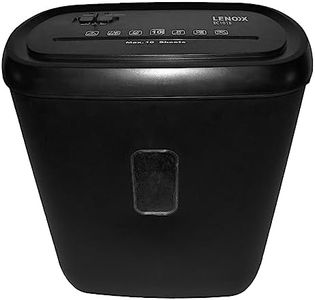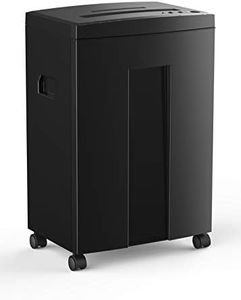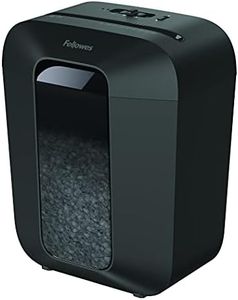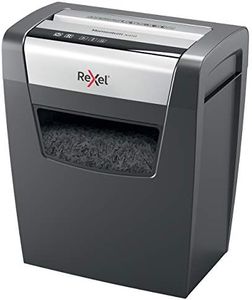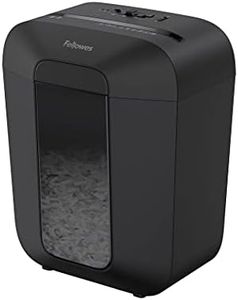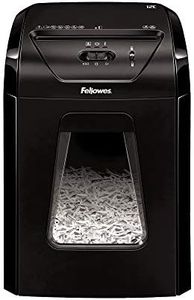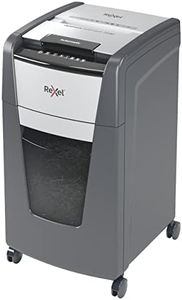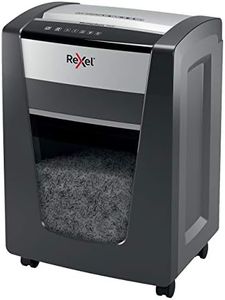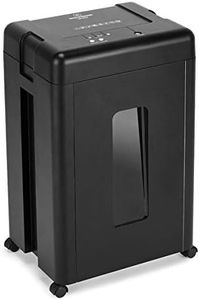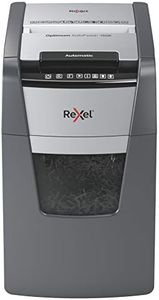We Use CookiesWe use cookies to enhance the security, performance,
functionality and for analytical and promotional activities. By continuing to browse this site you
are agreeing to our privacy policy
10 Best Home Paper Shredder
From leading brands and best sellers available on the web.Buying Guide for the Best Home Paper Shredder
Choosing the right home paper shredder is all about matching your shredding needs with the features and capabilities of the machine. Consider how much you shred, the sensitivity of your documents, and how often you'll use the shredder. Taking some time to learn about the main specifications will help you pick a shredder that keeps your information safe and fits seamlessly into your home or home office environment.Shred TypeShred type refers to how the shredder cuts your paper. The three main types are strip-cut, cross-cut, and micro-cut. Strip-cut shredders slice paper into long strips and offer basic security, good for general use when document sensitivity is low. Cross-cut shredders cut paper both horizontally and vertically into confetti-like pieces, offering a higher level of security suitable for sensitive personal information. Micro-cut shredders reduce paper to tiny particles, providing the highest level of security and are best if you often destroy highly confidential material. Choose based on how sensitive the documents you regularly dispose are.
Sheet CapacitySheet capacity tells you how many sheets the shredder can handle at once. Smaller home shredders can typically handle 5-8 sheets, mid-sized ones do 10-15, and larger home-office alternatives may take up to 20 or more sheets per pass. If you only shred occasionally, a lower capacity is fine. For larger amounts of paperwork or frequent use, a higher capacity is more efficient and saves time.
Run TimeRun time is the amount of time a shredder can operate before it needs to cool down. Basic home models often have a run time of only a few minutes, suitable for occasional shredding. Heavier-duty models may run for up to half an hour, ideal if you need to shred big piles at once. If you mainly shred a handful of pages at a time, shorter run times are enough. However, if you periodically clear out lots of old paperwork, look for a shredder with a longer run time and a shorter cool-down period.
Bin CapacityBin capacity tells you how much shredded paper the basket can hold before you need to empty it. Smaller bins (around 3-5 gallons) are fine for light use, while larger bins (6-8 gallons or more) mean less frequent emptying and are convenient for frequent shredding. Think about how often you want to deal with the mess and how often you’ll shred to choose the right capacity for your space and routine.
Safety FeaturesShredders may include safety features such as automatic shut-off, jam protection, and safety locks. These features help prevent accidents and protect children and pets. If you have little ones at home or just want peace of mind, prioritize models with advanced safety features. For single adults or office setups without children, basic safety features might suffice.
Noise LevelNoise level measures how loud the shredder is during operation. Quieter models are ideal for shared spaces or home offices where noise could be disruptive. If you often shred while others are working or resting nearby, consider a model known for low noise. If noise is not a concern, you’ll have more options to choose from.
Material VersatilitySome shredders can handle more than just paper, such as staples, credit cards, or CDs. If you need to safely dispose of plastic cards or disks, look for models that specifically mention this capability. If you only plan to shred paper, you can focus on models designed for that alone.
